FREE RANGE EGGS IN AUSTRALIA


We can buy eggs laid by caged hens or eggs laid by free range hens in Australia. According to Australian Consumer law, free range eggs are defined as eggs laid by hens who have meaningful and regular access to the outdoor areas, are free to roam and forage and are stocked at less than 10 000 hens per hectare. Caged hens live inside large, climate controlled sheds. The cage must be 40cm high, provide at least 550cm² per hen and 10cm feeder space. Eggs from caged hens are considered safer than free range eggs and production is higher and more efficient. Caged hens rarely get sick and live longer.
New legislation in Australia dictates that caged hens will be phased out by 2036, but each state will decide on its own timeline. Many states are already predicting 2025 as the goal for ending caged hens. Battery hens, or caged hens, will still be legal but egg farmers will need to provide larger cages and ‘enrichment’ for the chickens.
Apparently, only 30% of eggs purchased in Australia currently come from caged hens. Both large supermarket chains in Australia have announced they will end the sale of caged eggs by 2025. ( Some research says 40% of eggs bought in Australia are from caged hens.)
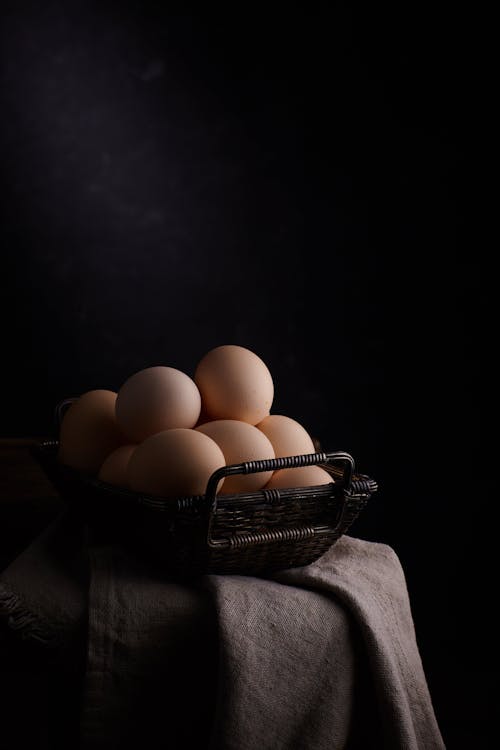

Image Pexels
Free range eggs are more expensive than caged eggs. Nutritionally, both are very similar. Eggs are high in vitamins and minerals. We have sought out free range eggs for many years. We were concerned about the welfare of the hens. I also like the environmental aspects on chicken poo returning to the paddock as fertilizer. Free range hens are able to practice normal behaviours, such as perching, nesting and dust bathing. I try not to buy eggs from large supermarkets as they are not as fresh as eggs from other sources. By the end of 2022 our ‘other sources’, one a commercial farm with low stocking levels with daylight hours spent outdoors and another, an independent supplier, had dried up. We’re looking for alternatives.
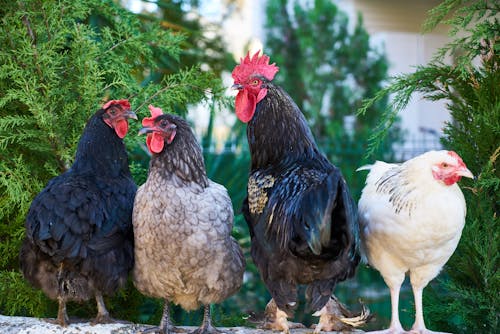

PLASTIC FREE JULY


Plastic free July was started by Rebecca Prince-Ruiz, the founder of the Plastic Free Foundation, and a small team of supporters. Begun in 2011 and since 2017, a not for profit charity, Plastic Free July encourages everyone to reduce their use of plastics. Their vision is to see a World free of plastic waste.
Most plastics are produced from oil and gas and don’t decompose. This means plastic micro beads ( broken down plastic) can remain in landfill, soil, rivers and oceans, harming the environment and animals for centuries.
So what can we each do? There’s many checklists, ideas and helpful information online. Try making little changes all the time. Select the easy things to start with, such as refusing plastic wrapped items in the fruit and veggie aisle ( take you’re own fabric bags and if you forget, use a paper bag from the mushroom area), buy milk in a glass bottle (cartons are lined in plastic), store things in glass, bamboo lidded containers or glass jars, both of which are infinitely reusable.
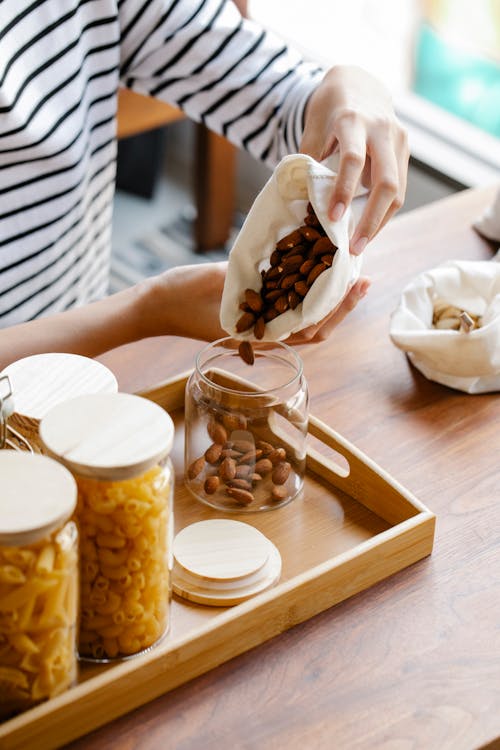

Image Pexels
If you have room and the ability to make compost, put all your veggie and fruit scraps into the pile. I make evil smelling slime, not compost, so turn all sorts of vegetable off cuts/remains into stock, which I freeze, or turn into soup. Stock will be strained so apparently you can add onion skins and garlic skins. I haven’t tried doing this, but intend to soon. The trick is to store the remnants in a glass jar or similar in the freezer until you have collected enough to make stock. And if you’ve never made stock, inspire yourself by reading the ingredients in bought, liquid stock, packaged in a plastic lined carton.
I have bought waxed fabric wraps and also done a workshop making them from fabric and beeswax. They look very attractive but never adhered properly to my containers, so I gave up. I had to add a rubber band to keep them on the container, too much faffing around. I use shower caps collected from hotel rooms. Used, wash, hang over the tap to dry, reuse. Problem is they finally tear away from the elastic and then become landfill. So I’m trying beeswax wrappers again.
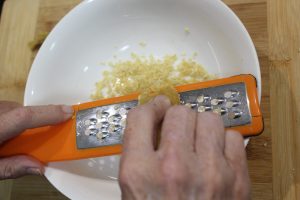

To make bees wax wrappers you need washed cotton squares, beeswax and grater, an iron and old fashioned grease proof paper. You need to iron your fabric square, grate the beeswax if you’re using it or buy beeswax pellets. I have seen pellets for sale online. This would be quicker.
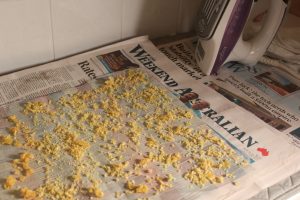

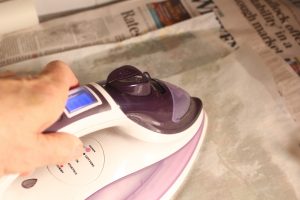

I did what I have done before except I used a lot of grated beeswax as I really wanted this to work. I have accepted that I cannot make compost and today I have accepted beeswax wrappers aren’t for me, either. The wrapper I tried just doesn’t seal tightly enough for me. Last time this happened with bought wrappers I keep them securely on with rubber bands. Wont be doing that, either, so my bees wax wrapper will go into someone else’s compost!
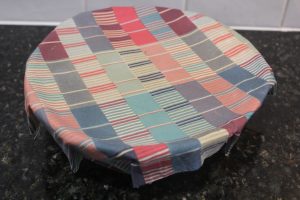

If you want to try beeswax wrappers there’s many YouTube and online tutorials. Good Luck!
